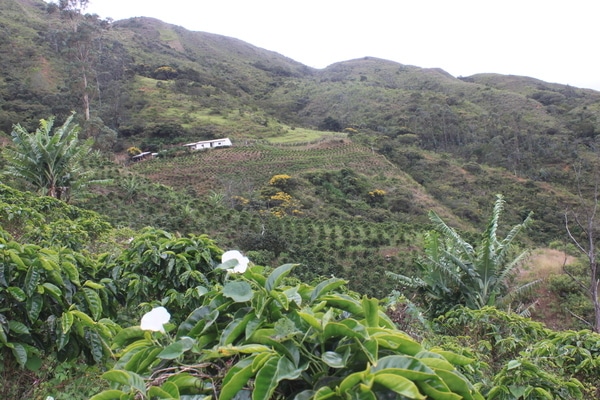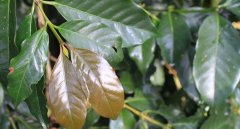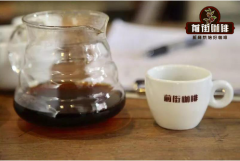How is the coffee delivered from the farm to the cup? What process does it take for coffee to be roasted?
Coffee grows best in countries near the equator. We usually divide these countries into three categories: central / South America, Africa and the Pacific. If you are in the United States, none of these places are particularly close, so today we will outline how coffee goes from the farm to your cup. This is often referred to as the "supply chain", although the boutique coffee industry often uses the word "value chain", we will track the coffee through its physical movement (where), rather than tracking its ownership path from one business to another.

Farmers and farm workers
Coffee grows on trees. Think of taller shrubs, which are usually harvested once a year. Coffee farms can range from very small to very large and are usually influenced by the history of land ownership in the country of origin. Smaller farms usually use family or community labour, while larger farms employ a combination of regular and seasonal workers.
Coffee quality begins at the farm level. The responsibility for ensuring the health of coffee trees, picking coffee at the right maturity and, in some cases, processing and drying coffee lies with farmers and farm workers. If any of these steps are not carried out, the potential good coffee will depreciate and people will not be able to go further "down" the supply chain to restore its quality.
Coffee farms range from very small (1 hectare) to large (more than 100 hectares). About 80% of coffee is produced by small farmers: farmers own relatively small land, rely mainly on coffee as their main source of income, and usually rely on the work of family and friends. Most large and medium-sized farms have very little fixed labor and employ extra labor seasonally as needed. Generally speaking, coffee farming is a family business, and many farmers today inherit land and trees from their parents.
Washing treatment
When coffee is picked, it looks like a bright red berry, which is what we call coffee "cherry". What we actually brew is the seeds in the coffee fruit, so the next step after picking is to separate the seeds. We call it processing, and it can take several different forms. Most of the coffee we sell uses a water washing process, using water in a wet mill to separate seeds (often called coffee beans) from coffee cherries. Sometimes this washing step takes place on the farm itself. In other cases, farmers send their coffee cherries to cooperatives or purchasing stations for processing.
Once the washed coffee beans dry, they still cannot be 100% separated from the coffee fruit material. The washed coffee beans still have a paper parchment layer, while the whole cherry of the naturally processed coffee still surrounds the coffee beans. The dry mill completes the separation process, removing any remaining layers from the coffee beans. The dry mill then divides the coffee into different grades according to the physical properties of the beans, such as density and color. Dry mills are usually owned and managed by exporters.
Exporter
Deliver parchment dried coffee to the exporter from a cooperative or similar type of collection point. Exporters almost always have a dry mill to remove parchment from coffee and separate coffee according to size, density and color. At this stage, any obvious defects in the coffee will also be removed. The dry mill usually has a cup testing laboratory and trained cup testers who are responsible for tasting the coffee and evaluating its quality.
After dry grinding, the coffee is bagged and stored until it is ready for transport to the port.
The exporter is also responsible for actually transporting the coffee to the port and preparing the paperwork to ensure that the coffee is accepted by customs.
Exporters also play a vital role in financing. Just as cooperatives provide coffee to farmers, exporters pay for coffee to cooperatives before exporters receive payment for coffee. In some cases, they lend to cooperatives to pay farmers' fees-usually interest rates, if any, are much lower than those charged by banks.
Importer
Just as the exporter is responsible for transporting coffee from the country of origin, the importer is responsible for bringing it in, usually the importer has ownership of the coffee at the port of export, book shipping space on container ships and facilitate the coffee to reach customs.
Once through customs, the importer stores the coffee in a warehouse, usually near the port of entry. Importers continue to own coffee.

Baking
A coffee bean, we do this by testing the quality, carefully roasting the coffee we order every day, and teaching our customers and customers how to make coffee. Efforts have been made to make the coffee we buy better, and the responsibility for these improvements rarely falls on a single person or entity. More likely, these improvements involve the joint efforts of everyone.

The coffee in your cup
Our coffee roasting can be found and purchased from many of our customer partners, including cafes.
Coffee, as you can see, the coffee supply chain can be very long, and there are many times and places where there will be problems, thus reducing the quality of coffee. But our rigorous work will ensure that the coffee in your cup is a good cup of coffee.
Important Notice :
前街咖啡 FrontStreet Coffee has moved to new addredd:
FrontStreet Coffee Address: 315,Donghua East Road,GuangZhou
Tel:020 38364473
- Prev

Why is organic coffee expensive? Will organic coffee be a safer coffee?
When it comes to organic coffee, as we often mention, organic tea actually means the same thing, what is the organic definition related to coffee. Then let's go on to learn a little bit more about it. Organic certification of crops, in this case, coffee has four basic components: 1. Do not use synthetic pesticides, herbicides or fungicides.
- Next

Coffee basic what is decaffeinated coffee? How much caffeine is there in coffee?
Coffee beans, the seeds of tree fruit, naturally contain caffeine and have been used for centuries for their refreshing quality. So what's the difference between caffeinated coffee and decaffeinated coffee? How does our coffee compare in terms of caffeine content? How much caffeine is there in coffee? In the past, light baking was thought to retain slightly more caffeine than dark baking, but
Related
- Beginners will see the "Coffee pull flower" guide!
- What is the difference between ice blog purified milk and ordinary milk coffee?
- Why is the Philippines the largest producer of crops in Liberia?
- For coffee extraction, should the fine powder be retained?
- How does extracted espresso fill pressed powder? How much strength does it take to press the powder?
- How to make jasmine cold extract coffee? Is the jasmine + latte good?
- Will this little toy really make the coffee taste better? How does Lily Drip affect coffee extraction?
- Will the action of slapping the filter cup also affect coffee extraction?
- What's the difference between powder-to-water ratio and powder-to-liquid ratio?
- What is the Ethiopian local species? What does it have to do with Heirloom native species?

